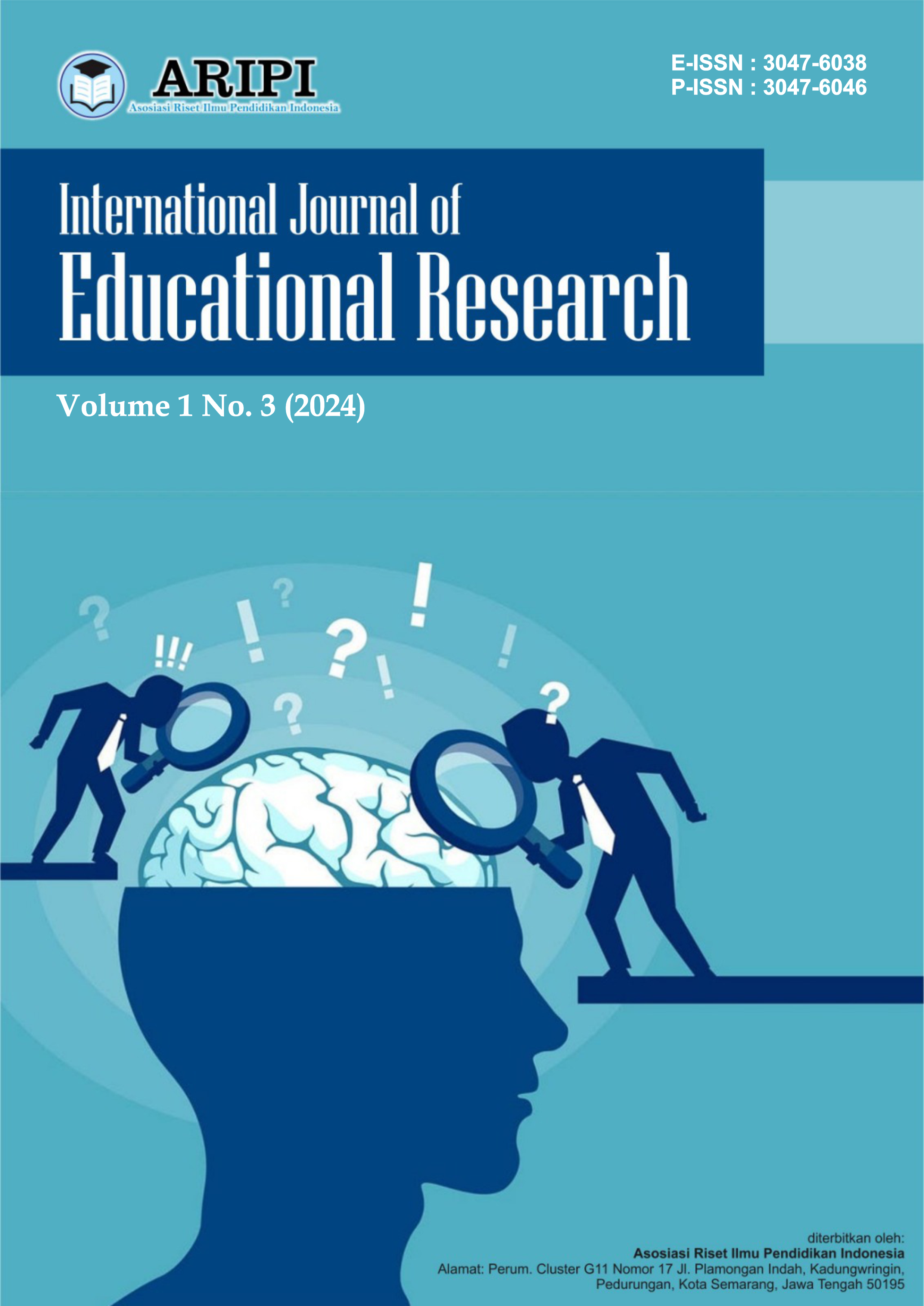The Influence of Campus Environment on the Development of Self-Identity of Adolescent Students
DOI:
https://doi.org/10.62951/ijer.v1i3.42Keywords:
Campus Environment, Self-Identity, Teenage Students, Social Interaction, Academic SupportAbstract
This study aims to analyze the influence of the campus environment on the development of self-identity in adolescent students. Adolescence is a crucial period in the formation of self-identity, and the campus environment as one of the main social contexts plays an important role in this process. This study uses a quantitative approach with a survey method involving 200 adolescent students at one of the state universities in Indonesia. Data were collected through a questionnaire that measured various aspects of the campus environment, including social interactions, extracurricular activities, academic support, and campus facilities, and how these factors contribute to the development of student self-identity. The results of the data analysis show that the campus environment has a significant influence on the development of student self-identity. Positive social interactions, participation in extracurricular activities, and adequate academic support have been shown to contribute significantly to increasing students' self-confidence, self-understanding, and sense of social connectedness. Adequate campus facilities also support the process of exploring self-identity by providing space for students to develop their interests and talents. However, this study also found that some students faced difficulties in adjusting to the new campus environment, especially those from less supportive socio-economic backgrounds.
References
Arnett, J. J. (2000). Emerging Adulthood: A Theory of Development From the Late Teens Through the Twenties. American Psychologist, 55(5), 469-480. doi:10.1037/0003-066X.55.5.469
Astin, A. W. (1999). Student Involvement: A Developmental Theory for Higher Education. Journal of College Student Development, 40(5), 518-529.
Chickering, A. W., & Reisser, L. (1993). Education and Identity (2nd ed.). San Francisco: Jossey-Bass.
Erikson, E. H. (1968). Identity: Youth and Crisis. New York: W. W. Norton & Company.
Kuh, G. D. (2001). Assessing What Really Matters to Student Learning: Inside the National Survey of Student Engagement. Change: The Magazine of Higher Learning, 33(3), 10-17. doi:10.1080/00091380109601795
Pascarella, E. T., & Terenzini, P. T. (2005). How College Affects Students: A Third Decade of Research (Vol. 2). San Francisco: Jossey-Bass.
Strayhorn, T. L. (2012). College Students’ Sense of Belonging: A Key to Educational Success for All Students. New York: Routledge.
Tajfel, H., & Turner, J. C. (1986). The Social Identity Theory of Intergroup Behavior. In S. Worchel & W. G. Austin (Eds.), Psychology of Intergroup Relations (pp. 7-24). Chicago: Nelson-Hall.
Tinto, V. (1993). Leaving College: Rethinking the Causes and Cures of Student Attrition (2nd ed.). Chicago: University of Chicago Press.
Waterman, A. S. (1999). Identity, the Identity Statuses, and Identity Commitment: Measurement and Theory. Journal of Adolescence, 22(3), 337-353. doi:10.1006/jado.1999.0219
Wilson, K. L., & Portes, A. (1975). The Educational Attainment Process: Results from a National Sample. American Journal of Sociology, 81(2), 343-363. doi:10.1086/226096
Zimmerman, M. A., & Rappaport, J. (1988). Citizen Participation, Perceived Control, and Psychological Empowerment. American Journal of Community Psychology, 16(5), 725-750. doi:10.1007/BF00930023
Downloads
Published
How to Cite
Issue
Section
License
Copyright (c) 2024 International Journal of Educational Research

This work is licensed under a Creative Commons Attribution-ShareAlike 4.0 International License.




